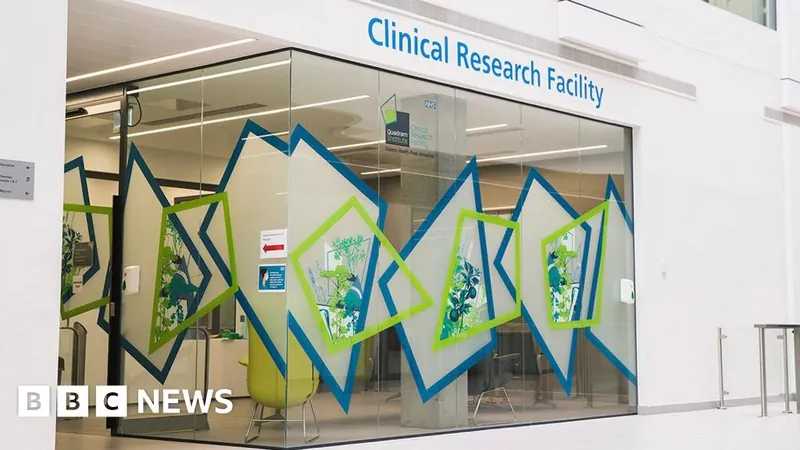
Alarming Rise in Severe Skin Complications from Chickenpox in Healthy Children in Iran: A Wake-Up Call for Vaccination
2025-03-24
Author: Wei Ling
Introduction
Chickenpox, or varicella, is often perceived as a mild childhood illness, but it can escalate to severe complications that require hospitalization. This trend is becoming increasingly alarming in Iran, where the varicella-zoster vaccine is not part of the national immunization program. A recent study sheds light on the extent of severe skin-related complications arising from chickenpox among children in the country, prompting a broader discussion on public health and vaccination policies.
Study Overview
This case series study, conducted between December 2023 and March 2024, involved 17 children who were admitted to a hospital in Iran due to severe skin complications associated with varicella. Of the 98 varicella cases diagnosed, 17 (approximately 17.3%) were evaluated for these serious complications, primarily affecting otherwise healthy children.
The majority of the affected children were males, with an average age of 6.9 years. The report noted that the complications primarily affected the chest and neck regions, with cellulitis being observed in all cases, while abscess formation occurred in several instances. The most alarming discovery was a rare case of necrotizing fasciitis, a severe condition that indicated the grave potential of varicella complications.
Clinical Findings and Treatments
Treatment protocols included local wound care, broad-spectrum antibiotics, and, in some cases, surgical intervention. Bacterial cultures showed a significant presence of Group A β-hemolytic Streptococcus, highlighting the risk of bacterial superinfection following chickenpox.
The study also documented specific case histories, illustrating the nature and severity of complications faced by these children. For instance, one 6.2-year-old female patient remained hospitalized for 21 days due to extensive abscesses requiring surgical drainage. Similarly, another case involved a 7.7-year-old male who suffered considerable tissue damage, necessitating multiple debridement surgeries and skin grafting to promote healing.
Concerns and Implications
The findings from this research are particularly troubling, showing a marked rise in hospitalization rates due to varicella complications. Compared to previous years, the rates suggest a growing severity of cases or an increased incidence of complications. Notably, although the duration of hospital stays following the onset of skin complications averaged about 15 days, this was significantly longer than what has been reported in similar studies in other regions, indicating a unique public health challenge.
Moreover, the lack of local epidemiological data on varicella in Iran complicates efforts to assess the value and feasibility of integrating the varicella-zoster vaccine into routine immunization practices. As many countries have already included this vaccine in their schedules, Iran is lagging behind in tackling this preventable illness.
Call to Action
The study strongly advocates for the inclusion of the varicella vaccine in Iran's national immunization program to prevent such severe complications in the future. It emphasizes the necessity for comprehensive cost-effectiveness analyses to understand the long-term economic benefits of vaccination, alongside immediate healthcare costs related to disease management. Analysis of the long-term impacts of severe varicella complications on children who have experienced them is also crucial for developing effective public health strategies.
As chickenpox continues to pose risks—even among healthy children—the urgent call for vaccination grows louder. Public health authorities must reassess existing immunization protocols to safeguard children against this preventable illness and its dangerous complications. This case study serves as a wake-up call for Iranian health officials, health care providers, and parents alike: the consequences of delaying vaccination are far-reaching and potentially life-threatening. It’s time to prioritize the health and safety of the next generation by investing in preventive measures.





 Brasil (PT)
Brasil (PT)
 Canada (EN)
Canada (EN)
 Chile (ES)
Chile (ES)
 Česko (CS)
Česko (CS)
 대한민국 (KO)
대한민국 (KO)
 España (ES)
España (ES)
 France (FR)
France (FR)
 Hong Kong (EN)
Hong Kong (EN)
 Italia (IT)
Italia (IT)
 日本 (JA)
日本 (JA)
 Magyarország (HU)
Magyarország (HU)
 Norge (NO)
Norge (NO)
 Polska (PL)
Polska (PL)
 Schweiz (DE)
Schweiz (DE)
 Singapore (EN)
Singapore (EN)
 Sverige (SV)
Sverige (SV)
 Suomi (FI)
Suomi (FI)
 Türkiye (TR)
Türkiye (TR)
 الإمارات العربية المتحدة (AR)
الإمارات العربية المتحدة (AR)